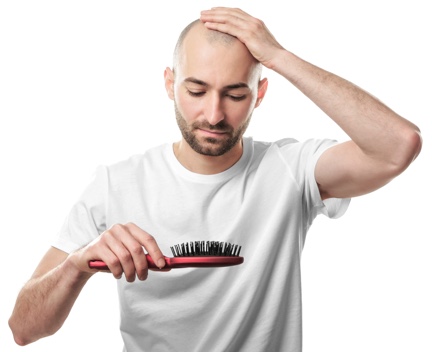There are many causes of hair loss including disease and genetic predisposition. Yet, the most common reason men and women experience hair loss is due to poor cosmetic grooming practices.
Cosmetic hair care
Maintaining great hair for life
Scalp scratching
Even though mild to moderate seborrheic dermatitis does not cause hair loss, the scratching associated with the scalp pruritus can definitely predispose to hair loss. It is possible to remove all of the cuticular scale off of a hair shaft with only 90 minutes of continuous scratching by the fingernails. This loss of cuticle leaves the hair shaft weakened and permanently cosmetically damaged. Thus, treatment of scalp itch is important to preventing hair loss.
Long hair vs short hair
Long hair is much more likely to be cosmetically damaged than short hair. Therefore, patients who have extensive hair damage may wish to select a shorter hair style to maximize the appearance of the hair. In this case, it is extremely important to identify the cause of the hair damage so that the newly grown hair remain healthy and cosmetically attractive.
Age–related factors
It is a well-known fact that hair growth slows down with age. This means that cosmetically damaged hair will be preset longer on mature individuals. Also, the diameter of the hair shaft decreases with advancing damage from chemical processing. For this reason, all chemicals used on mature hair should be weaker than those used on youthful hair.
Hair combing and crushing
Hair combing is a daily grooming ritual that frequently causes hair damage and loss. Hair should only be combed when dry, if possible. Wet hair is more elastic than dry hair meaning that vigorous combing of the moist fibbers can stretch the shaft to the point of fracture. The ideal comb should be made of a flexible plastic and possess smooth, rounded, coarse teeth to easily slip through the hair.
Extensive hair brushing should also be avoided while hair is wet. A good brush should have smooth, ball-tipped, coarse, bendable bristles. The brush should not tear the hair, but rather gently glide. Brushes used while blow drying hair should be vented to prevent increased heat along the brush, which could damage hair. Patients should be encouraged to brush and manipulate their hair as little as possible to minimize breakage. Older teachings that the hair should be brushed 100 strokes a day and the scalp vigorously massaged with the brush should be dispelled.
Hair clasps
Common sense applies to the selection of appropriate hair pins and clasps. Rubber bands should never be used; hair pins should have a smooth, ball-tipped surface; and hair clasps should have spongy rubber padding where they contact the hair. Loose-fitting clasps also minimize breakage. The fact remains, however, that all hair pins or clasps break some hair since they must hold the hair tightly to stay in place. To minimize this problem, the patient should be encouraged to vary the clasp placement so that hair breakage is not localized to one scalp area. This problem is particularly apparent in women who wear a ponytail. These women frequently state that their hair is no longer growing when in actuality it is repeatedly broken at the same distance from the scalp due to hair clasp trauma. Pulling the hair tightly with clasps or braids can also precipitate traction alopecia.
Hair cutting techniues
The hair should always be cut with sharp scissors. Any defect in the scissor blade will crush and damage the hair shaft. Crushing the end of the hair shaft predisposes to split ends.
Hair styling product use
Hair styling products are an important way to improve the cosmetic appearance of the hair shaft, but should always leave the hair shaft flexible. High hold stiff styling products can actually precipitate hair breakage when trying to restyle the hair with combing.
Hair colouring and bleaching
Hair colouring and bleaching are universally damaging to the hair shaft. It is sometimes said that chemical processing adds body to the hair. This means that the dyeing procedure allows the hair to stand away from the scalp with greater ease. This is not due to better hair health, but rather due to hair damage that makes the hair frizzy and more susceptible to static electricity. The basic rules of fair dyeing are always stay within you colour group preferably dyeing the hair no more than 3 shades from the natural colour.
Hair relaxing
Hair relaxing is weakening to the hair shaft, but can actually facilitate hair length in patients with kinky hair. This is due to decreased hair breakage during combing. The relaxing procedure straightens the hair and makes it easier to groom, but the grooming should be done gently to avoid hair shaft fracture.
Hair permanent waving
Lastly, hair permanent waving is also damaging. The curls should be as loose as possible with the interval between procedures as long as possible. For patients with damaged hair, the perming solution should be weak and left in contact with the hair for as short a period as possible.
Author: Zoe Diana Draelos is a board certified dermatologist in private practice and a primary investigator for dermatology consulting Services.
Published according to translation: Dr. Lorenzo


